Best Portable Led Continuous Light for Photography
The best LED light panels in 2022: portable lighting for photography and video

With the best LED light panels, you have one of the most versatile lighting tools at your disposal. Whether you're shooting photos or videos (though particularly the latter), an LED light panel sending out continuous, even light can be a godsend. Modern LED panels let you precisely vary the intensity and colour temperature of your light, making it straightforward to achieve precisely the look and feel you want in the shot.
The big difference between LED panels and flashguns is that LED panels emit light continuously, not just at the moment of capture, meaning you can see what your shot is going to look like before you capture it. Obviously essential in video, this can also be useful in stills photography.
LED panels come in a few different varieties, all of which we've covered in this guide. Hotshoe LED panels are the most straightforward; as the name implies, they can literally mount into a camera's hotshoe, and provide you with a point-and-shoot light source. Like a flashgun, they can also be mounted to a stand if you prefer. If you're using a DSLR (opens in new tab) or mirrorless camera (opens in new tab), they're a great choice, and are often quite affordable.
But say you've got an even simpler setup. Say you, like many people, are using a smartphone like one of the best iPhones (opens in new tab) to produce dynamic, interesting photo and video content. There are plenty of smartphone LED lights out there which are specifically designed for just such a setup, and many can put out more lighting power than you'd expect. At the other end of the scale, there are full-size panels, designed for professional studio use. They're less portable, but can deliver incredible lighting power.
In this guide, we've covered all the different types of LED light panel, with plenty of options for each. We've split the guide up into sections based on the above categories, to make it easier for you to navigate to your preferred type of light. So, let's get started!
The best LED light panels in 2022
Hotshoe LED panels
These LED lights mount to your camera's hot shoe where you'd otherwise attach a flashgun. They're ideal for on-the-go shoots where portability is paramount.
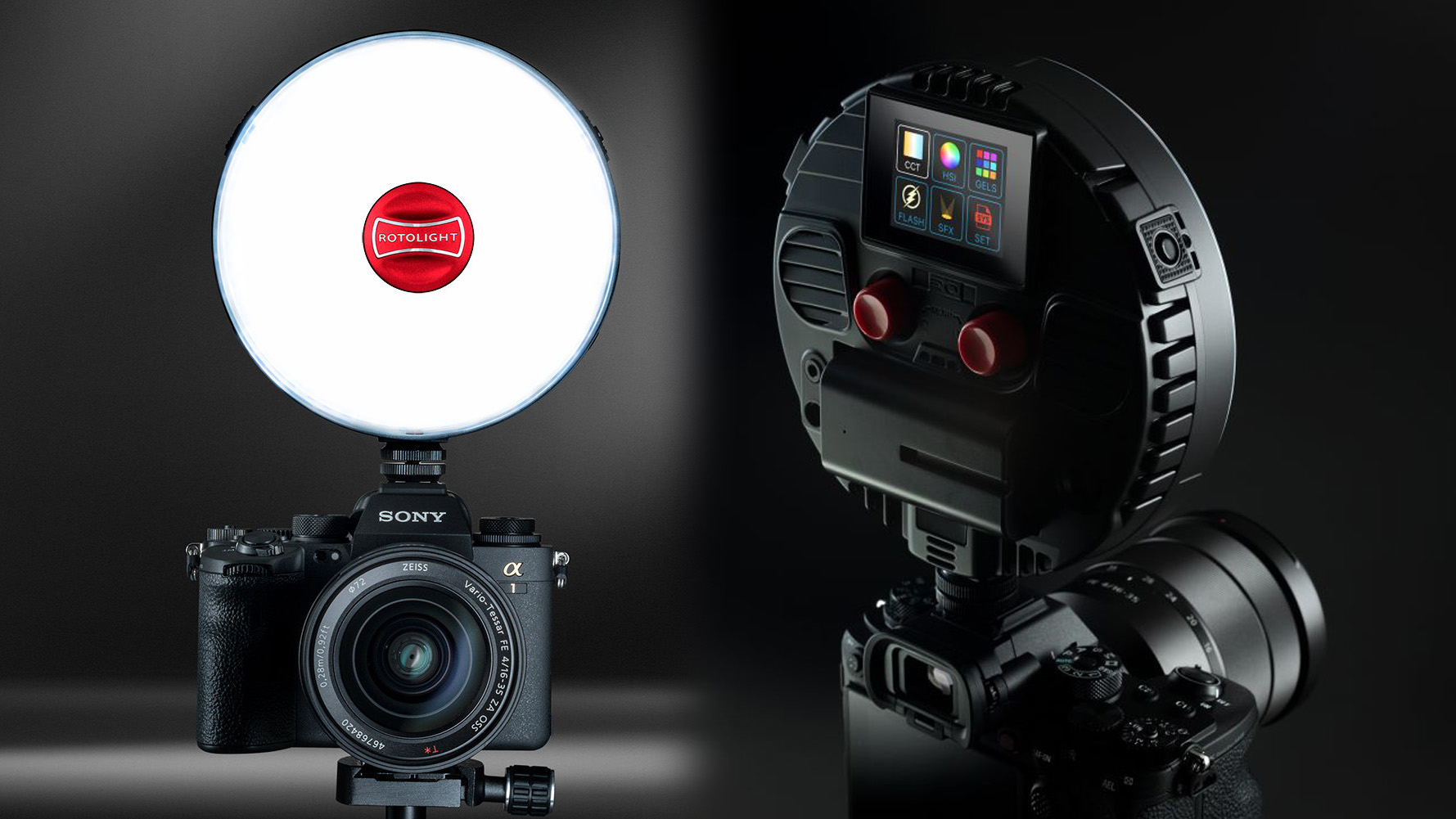
(opens in new tab)
The Rotolight NEO 3 builds on the success of the preceding NEO 2 (below), adding a raft of impressive new features. Both models deliver flash output as well as constant lighting, but the NEO 3 delivers a full range of color in both modes, with full RGBWW options. It comes in various configurations and kits and accessories will vary according to which you choose.
Small but powerful and extremely versatile as a constant LED light, the NEO 3 is a quantum leap forward from the NEO 2. It delivers a full color range in both constant and flash modes, with a huge range of electronic color filters and special effects, all available via a simple and intuitive color touchscreen menu. Maximum flash output is disappointing compared to a 'proper' flashgun but, even so, the NEO 3 is a brilliant solution for anyone who needs to shed a little extra light on both stills and video capture.
Read more: Rotolight NEO 3 full review (opens in new tab)
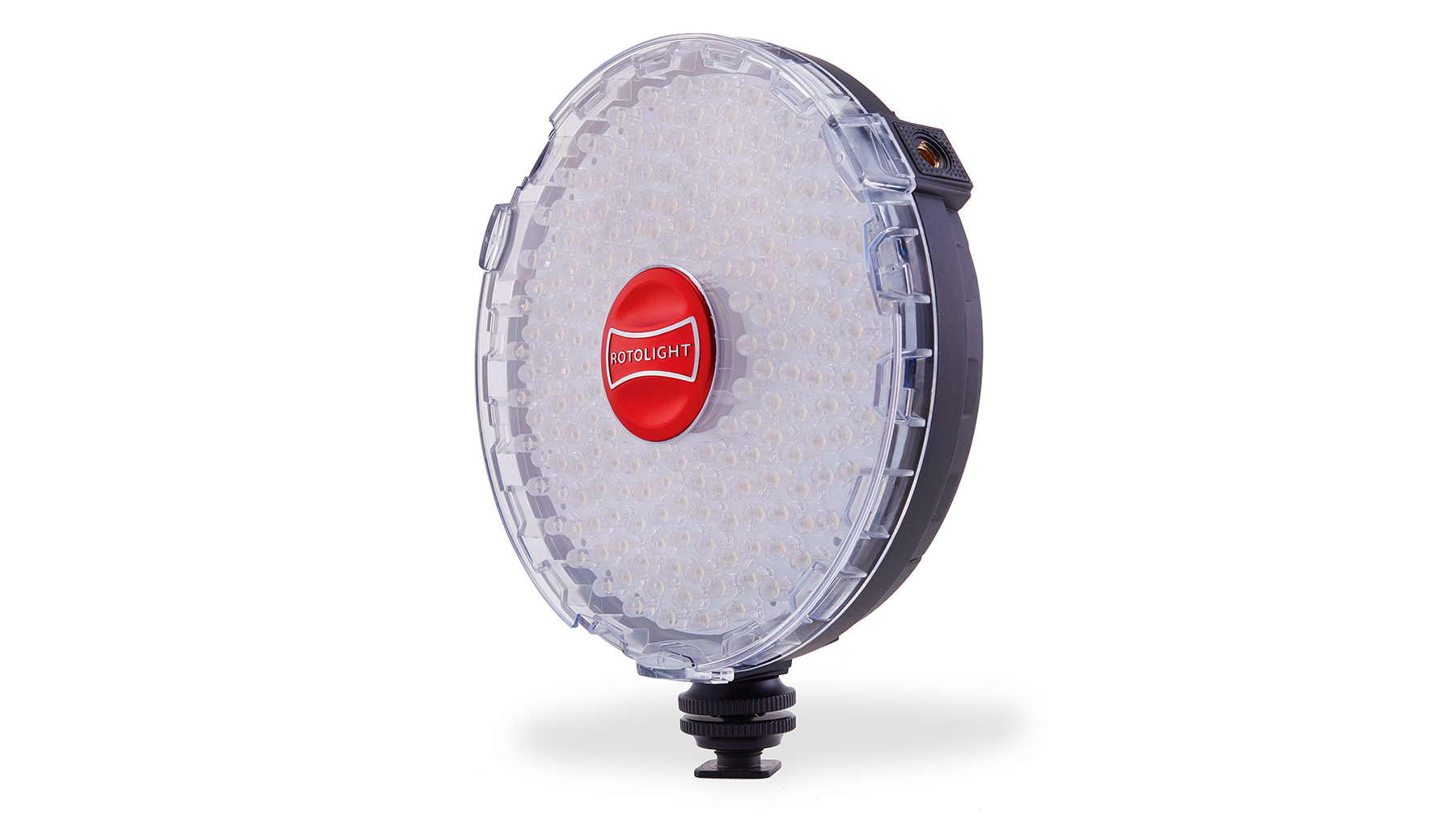

(opens in new tab)
The Rotolight NEO 2 is rated for a whopping 2,000 lux maximum brightness at three feet (91.5cm). We couldn't quite match this in our testing, measuring a peak 1,840 lux at 4,000K, but that's still noticeably brighter than most competitors. Brightness does drop to around 1,100 lumens at each end of the 3,150-6,300K temperature range, but this is the only issue we found. The dual control dials adjust a plethora of easy-to-set options. Six AA batteries sustain 90 minutes of full-power continuous illumination, or there's a mains input. You can even use the NEO 2 as a flash, with up to 500% more brightness than in continuous mode.
Now the NEO 3 is with us, the days of the NEO 2 may be numbered, but it's still widely available to buy new, and for a chunk of cash less than the NEO 3, making it quite a bargain.
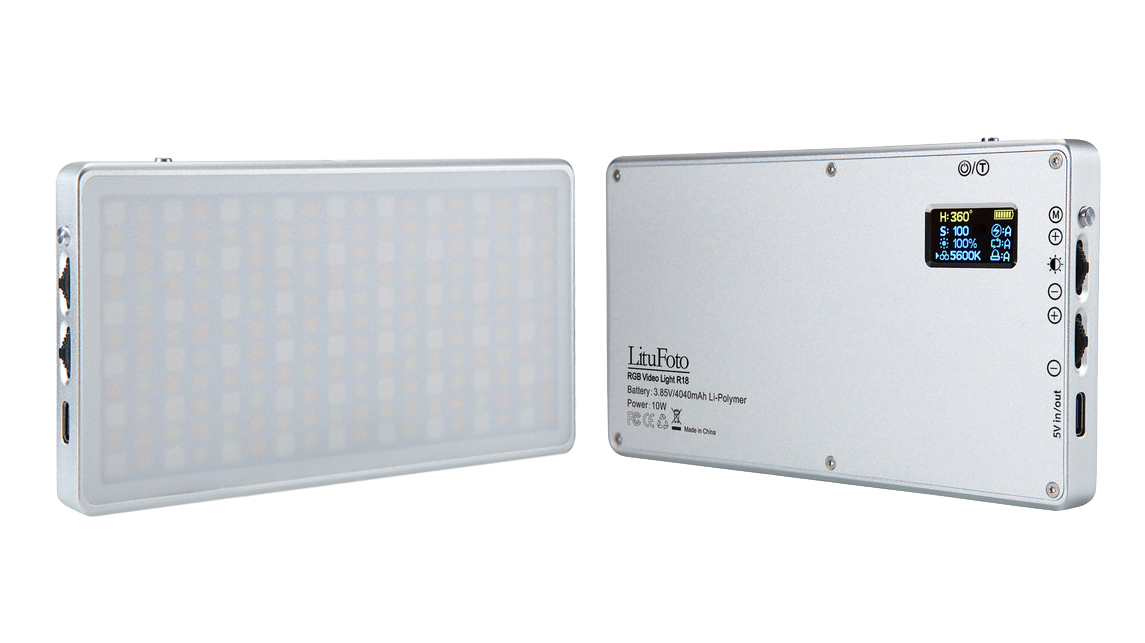
(opens in new tab)
Packing 198 LEDs and featuring bicolor temperature from 3200-5600K, the LituFoto R18 already has a lot going for it. Its 10W power output can be boosted to 13W, too, giving more bite to its light. And it even boasts some of Rotolight's special effects lighting, with nine simulations including lightning and emergency service vehicles, making it a great way to add impact to your video content. And not only does its meaty 4040mAh battery give you an hour and a half of use at full power, it also doubles as a power bank to charge mobile devices! A brilliant all-round performer and a camera bag essential.
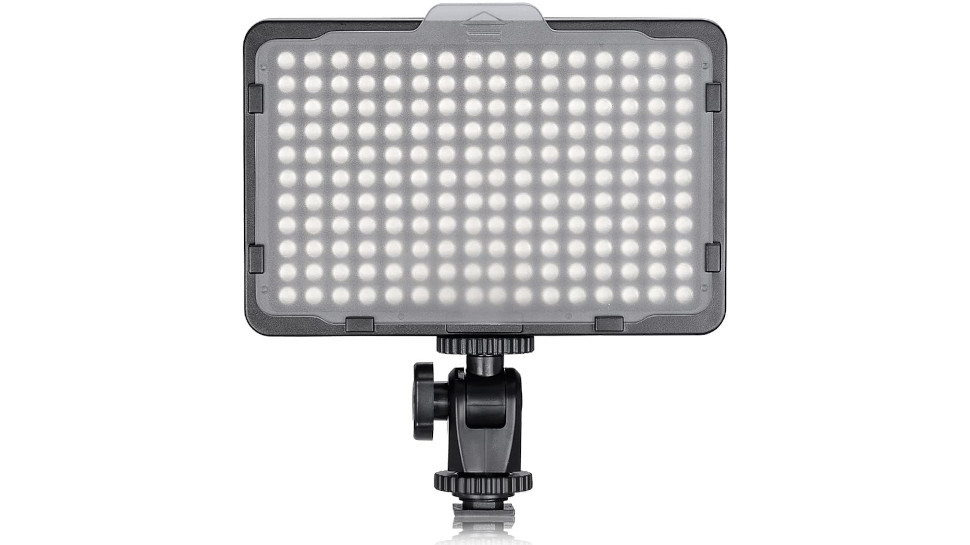
(opens in new tab)
At a price like this, you aren't going to get professional studio quality. That's a given. So let's talk about what the Neewer 176 LED Panel does give you, which is, as it turns out, rather a lot for the money. It's a tidy, powerful little light that can easily be mounted on a camera's hotshoe or a tripod, giving you a decent burst of brightness that works perfectly as a fill light or for a quick-and-dirty video light. Colour temperature is fixed at 5600K daylight, though the unit does come with a couple of filters to soften the light if that's your thing.
The build does feel a little plasticky and cheap, and it's worth noting that the price as advertised is not strictly accurate, as you'll need to pay extra for the not-included batteries or DC power supply. Still, that total outlay is going to be considerably list than you'd spend on most comparable units. The bottom line is: it works, and works well. What more do you need?
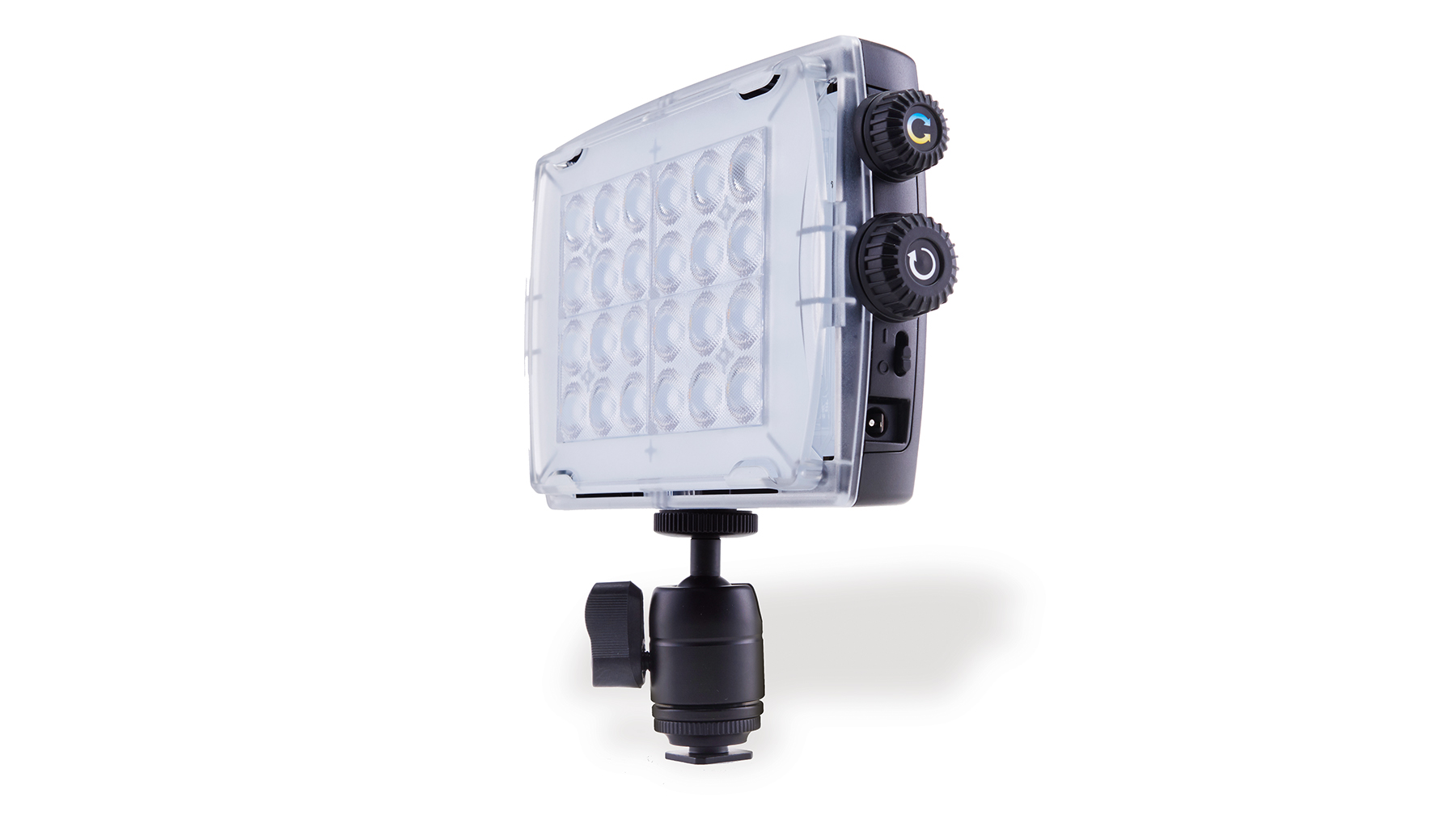
(opens in new tab)
The Manfrotto Croma2 offers adjustable colour temperature, which can fluidly transition from 3,300 to 5,600K. Both temperature and power are adjusted with simple dials with no scale markings, so repeating the same settings from shoot to shoot is difficult without a light meter. We recorded light power figures of 750 lux at 3,300k and 900 lux at 5,600K. With both sets of blue and yellow LEDs active at 4,550K, brightness peaks at 1060 lux. Despite a quoted 50º beam angle seeming slightly narrow, real-world use demonstrates a decent light spread. Power can come from the mains, or through two battery options. While the Manfrotto Croma2 is still available, it has experienced some stock fluctuations lately – especially outside of the US – so it can be worth keeping an eye out and being ready to pounce when you see one available.
Smartphone lights
Phone shooters shouldn't neglect their lighting either! Just because you're using a small, handheld device, that doesn't mean you can't benefit from a small, portable LED light to give you a little extra illumination when you need it. Many are also designed specifically to clip onto a smartphone, so will slot in perfectly to your light, portable setup.
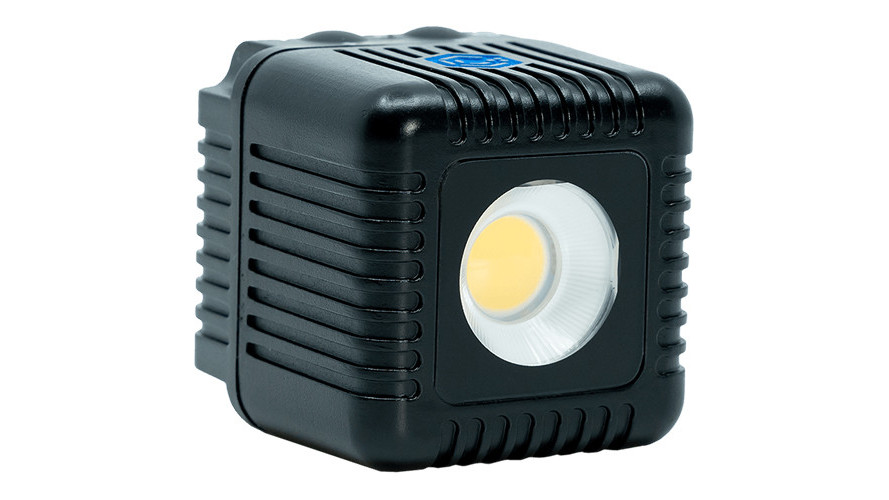
(opens in new tab)
The little hotshoe-mounted Lume Cube was a hit on its debut all the way back in 2014, and the Lume Cube 2.0 builds on that success. It improves on a lot of people's complaints about the original Lume Cube, most notably by extending the battery life. The Lume Cube 2.0 will now last for about an hour and a half at 100% brightness, and while this will be reduced a bit if Bluetooth is turned on, it's still very good. You can also continue to use it while it's charging via USB, which is pretty handy.
In terms of the light itself, the Lume Cube 2.0 puts out 750 lux at 1m, and achieves an impressive CRI score of 95. It's highly portable and modular, with loads of accessories available (though these do come at a cost). It's not going to compete with professional studio lights, but it's a great little option to have in a kit bag.

(opens in new tab)
The Lume Cube Panel doesn't reinvent anything about LED lighting, but it's a useful unit to have in a pinch and makes for a great shooting companion out on location. For a start, it's not just an LED panel, but also a power bank; when we tested it out, we were lighting our shots while also charging a smartphone, which is pretty handy. It doesn't hold enough juice to replace a dedicated power bank, but it's a handy feature nonetheless. If you don't use this functionality, then the 3.85V Li-Polymer battery will last about 90-100 minutes, which is also really impressive. Brightness is good, and though the colour temperature range is only 3200K to 5600K, this will still be enough for most purposes.
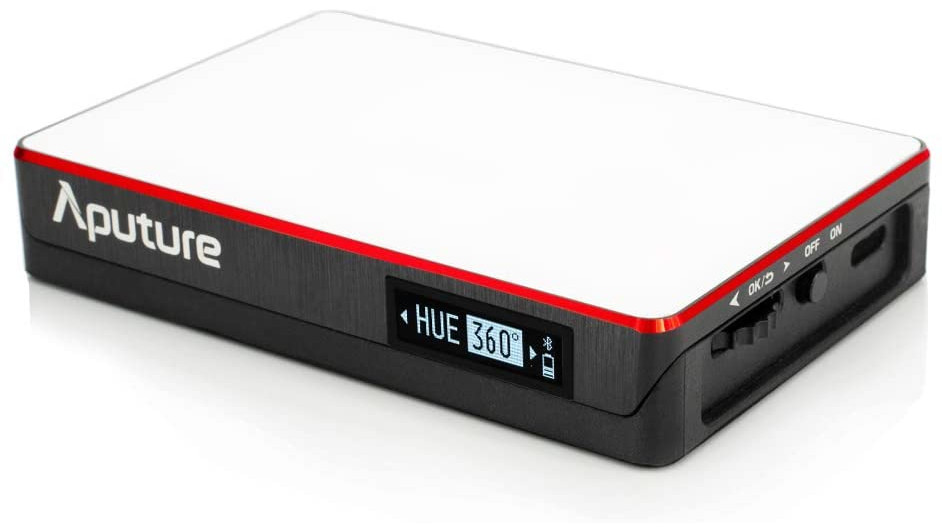
(opens in new tab)
A light so tiny it can fit in your wallet (literally: it's about the dimensions of a credit card, and not that much thicker), the Aputure MC RGBWW LED Light perfectly suits a lightweight, smartphone-based shooting setup. Whether you're using your phone for videos or stills, the Aputure MC RGBWW is a great way to give a little burst of light when you need it, with adjustable colour temperature and full output control via the Sidus Link Control App. While it doesn't come with a bespoke smartphone mount, the small size gives you not shortage of setup options, especially if you're willing to get a little creative.
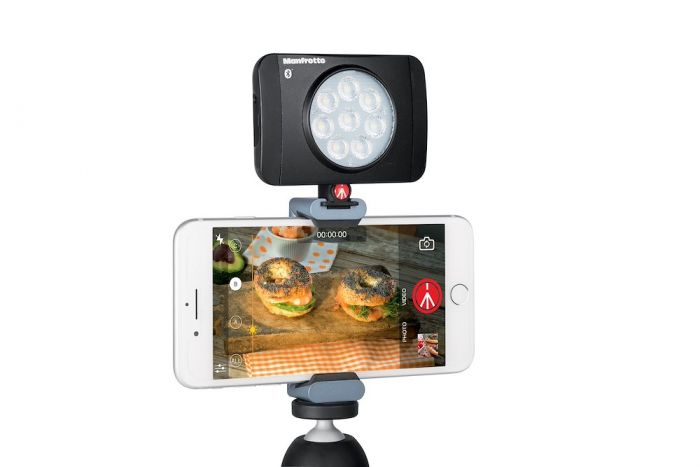
(opens in new tab)
The Manfrotto Lumimuse 8 is just the thing to do a good job in a tiny space, clipping easily onto your smartphone to provide a pretty impressive 550 lux of illumination. It also allows for further customisation through the attachment of filters (sold separately), meaning that you can further harness and control the quality of your light. With only four discrete brightness settings it's not exactly a precision tool, but it'll give you a powerful kick of illumination when you need it, and thanks to its USB charging port, you can keep it gassed up and ready to go throughout an entire day's shoot.

(opens in new tab)
The Joby BEAMO may not look much like a traditional LED panel, but this hotshoe-mounted light unit has got it where it counts. Capable of outputting up to 1,500 lumens, this is an impressive little light that's also small enough to keep in a pocket and take everywhere with you. There's also a slightly smaller, slightly cheaper "Beamo Mini" version that tops out at 1,000 lumens, which is quite a bit less useful. Unless you're on an ultra-strict budget, we'd say go with the full-size Beamo.
We were impressed by the portable convenience of the Beamo in our full review. While it's not going to trouble the big LED panels for power and versatility, the fact that you can throw it in any kit bag and have it at your disposal makes it a handy tool for giving yourself a burst of extra light in a pinch. Videographers may want to think about picking one up, just in case.
Read more: JOBY Beamo (and Beamo Mini) review (opens in new tab)
Studio panels
Need something with a bit more power? Here we've got larger LED panels designed to be mounted on a light stand or tripod. They're great for shoots like portraiture, or for lighting actors in stationary scenes, and for interviews.
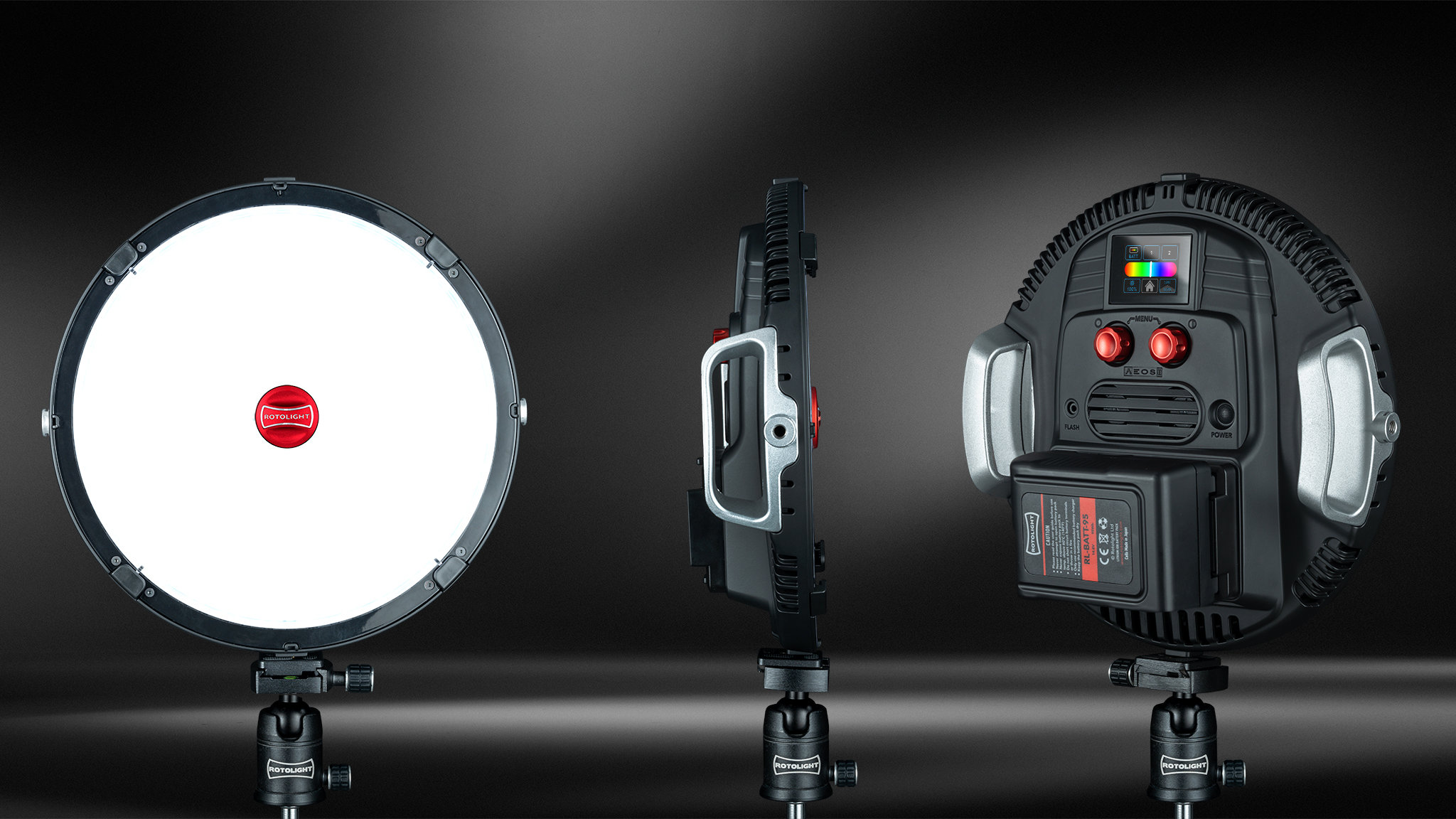
(opens in new tab)
This powerful, hugely versatile yet lightweight portable LED lighting panel is a radical redesign compared with the original AEOS. It gives you 16.7 million colors of light to play with, instead of just various degrees of white. And that goes for both constant lighting and flash, the latter with a high-speed sync option. The interface is also completely overhauled, with the addition of a color touchscreen that makes it quick and easy to access a huge range of lighting options, digital filters and special effects.
The AEOS 2 is available in several kit configurations: the cheapest 'Basic' kit only includes a mains power adaptor and no battery, although the light does come complete with a good-quality diffuser dome. The Explorer Kit adds a battery and charger, plus a padded soft case. Next up the price ladder, the Masters Kit doubles up on lamps and diffusion domes while also adding light stands and a padded soft case, but this time batteries aren't included. Top of the range is the Ultimate Kit, which is essentially the same as the Masters Kit with the addition of two batteries and chargers.
Even the cheapest AEOS 2 Basic kit is still a hefty investment, but it's a joy to use and a top performer, making it worth the money.
If the AEOS 2 isn't yet available where you are, the original AEOS (below) can still be found new, and for significantly less money than the AEOS 2.
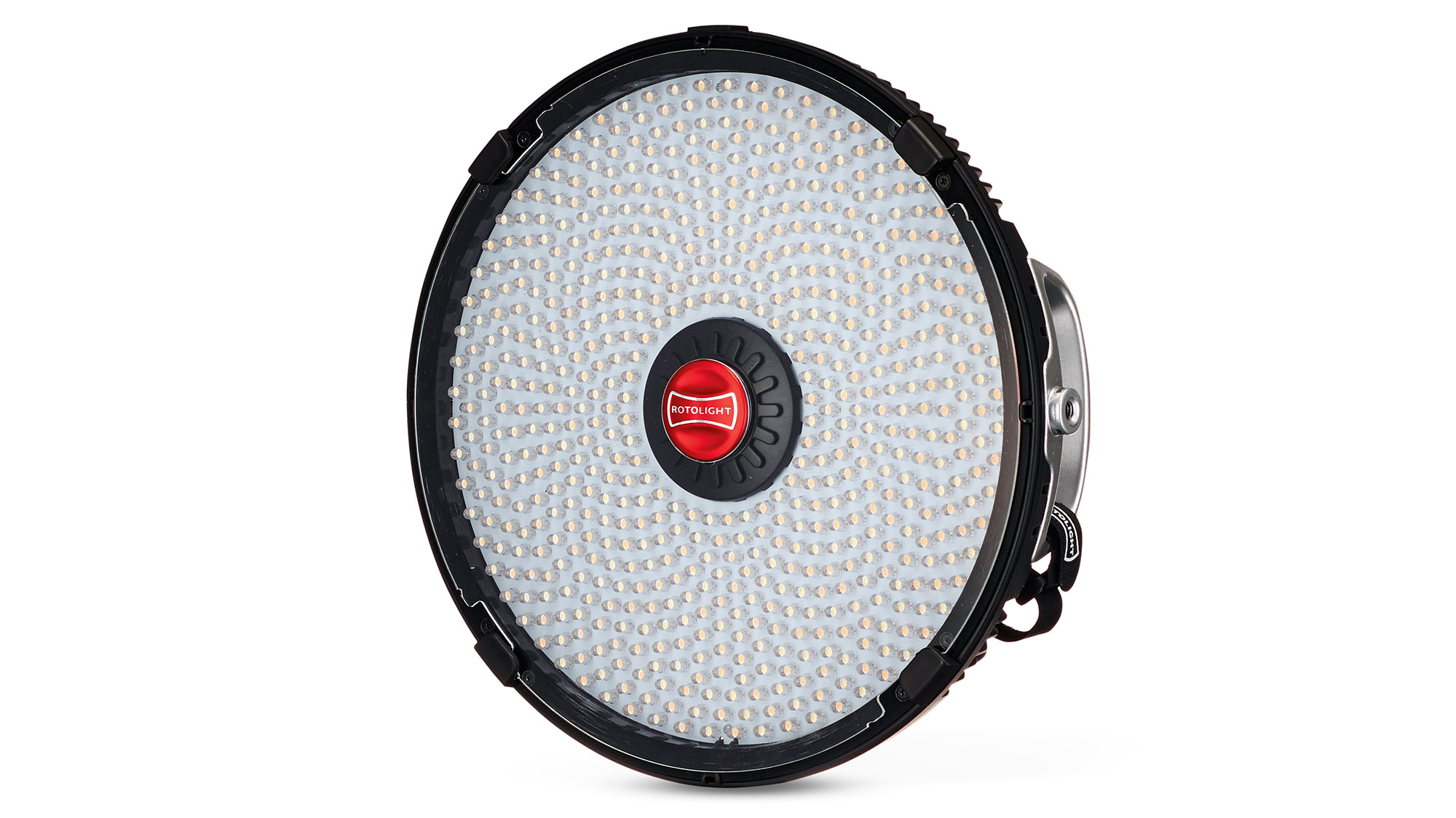

(opens in new tab)

The original AEOS was introduced as kind of a big brother to Rotolight's compact hot-shoe mountable NEO 2 LED light. The AEOS is designed to be mounted to a light stand for studio use, but it also features a pair of sturdy metal handles if you're lucky enough to have an assistant to hold it - and at just 1.4kg and a compact 30cm diameter, that's a genuine option.
Max power output is a literally eye-watering 5750 lux at 3ft, and the LED colour temperature is steplessly adjustable from a warm 3150K through to a daylight-balanced 6300K. Rotolight's emphasis on quality continues with a high colour rendering index of over 96. An easy to read rear display shows the current light intensity and temperature, both adjustable by dedicated control dials.
Push these and you reveal the AEOS's extra features. They include a High Speed Sync flash mode with double the power of the maximum continuous light output, and special effects to emulate flickering fire and emergency vehicle lighting.
Mains power is the standard juice, but you can go off-grid with a rechargeable power pack capable of a 3-hour runtime, albeit for an extra £275/$300.
The original AEOS has now been replaced by the AEOS 2 (above), which is a better light in all respects, but predictably that comes at extra cost. As the original AEOS is still being sold new, and with hefty discounts available, it's a real bargain right now.
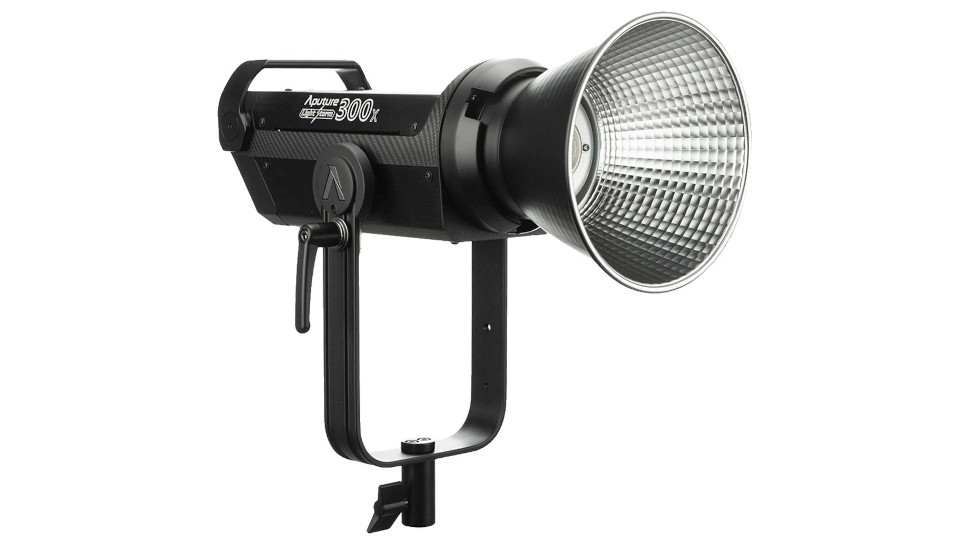
With a redesigned LED chip, the Aputure LS 300X puts an emphasis on versatility, making it a fantastic tool for photographers and videographers in the studio. And yes we do mean videographers – its quiet fans mean it won't overwhelm the sound of a video.
The Aputure LS 300X offers a huge amount of lighting control, with variable colour temperature from 2,700-6,500K, and compatibility with a wide selection of lighting modifiers. While it's mains-powered, the unit also has the option to switch to battery power, so can be used on location with ease, as well as in the studio. With a huge output of 56,000 lux at 1m, the Aputure LS 300X also has power where it counts, marking it out as one of the best professional lighting solutions around right now.

Part of the relatively new Nanlite range from Nanguang, the Nanlite Forza 300 is a powerful, portable and capable LED Light. Able to put out 43,060 lux at 1m, it's more than powerful enough for most photographic purposes, and it's pretty simple to use. Control is done via the control box, which can be mounted on a light stand using a locking collar to make sure it's out of the way.
The light is very easy to use, though the flip-side of this is that it might be too simplistic for some tastes; there's no colour temperature control, for instance, 5600K is all you're getting. Power consumption is also pretty heavy at 300W, which is more than an equivalent unit from the likes of Rotolight.

(opens in new tab)
Rotolight has packed the technology and features of its award-winning Titan X2 RGBWW LED light panel into the new Titan X1 which is a lot more portable and cheaper to buy – the both panels are expensive compared to regular photographic lights, reflecting their high-end cinematography market. You can set any color you like, including white, dial in electronically-adjustable diffusion, use special effects for filmmaking and even use it as a high-speed flash. It's a great tool for hybrid stills photographers and filmmakers.
Read more: Rotolight Titan X1 review (opens in new tab)
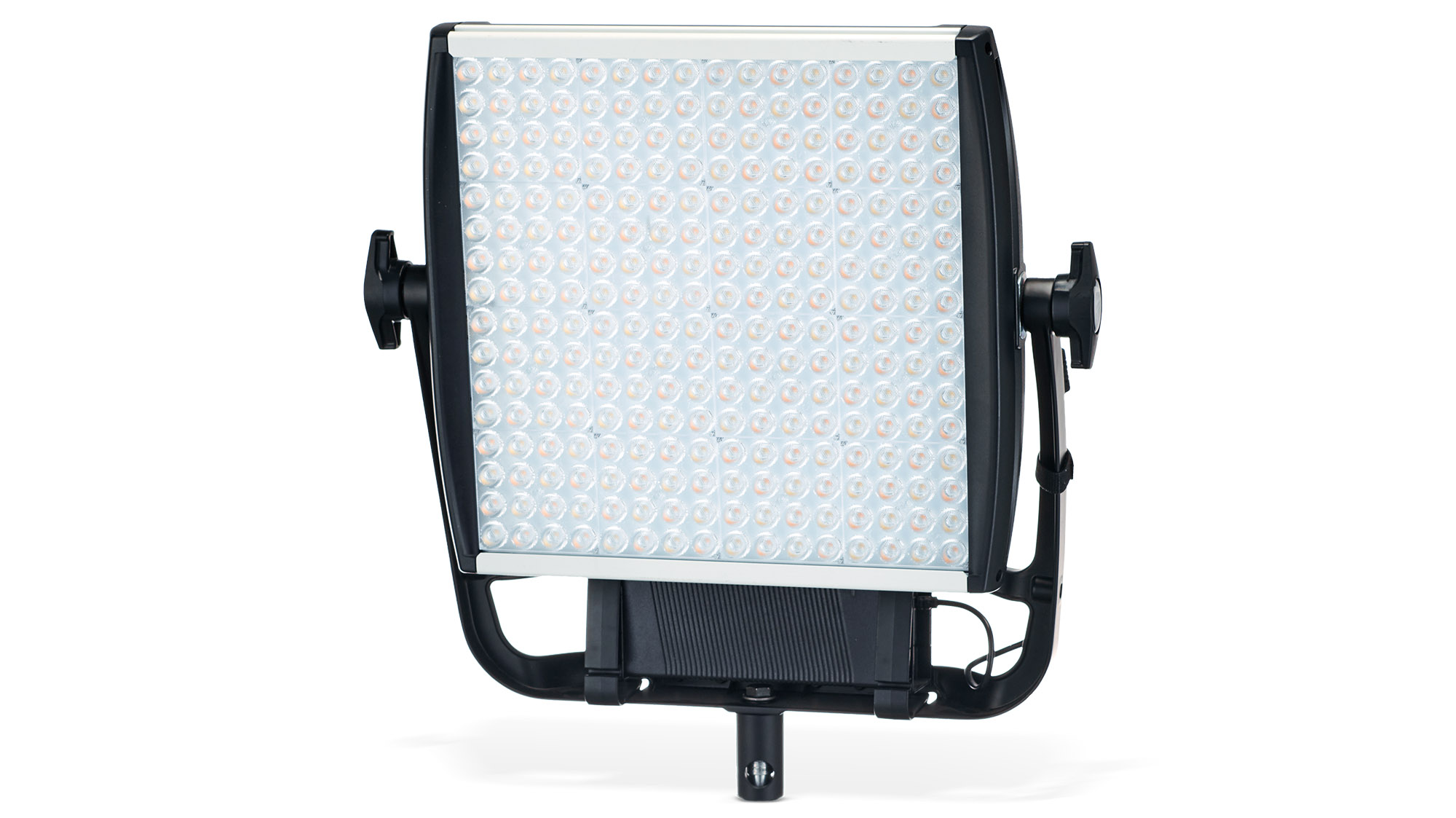
(opens in new tab)
Litepanels has a reputation for producing quality kit aimed at semi-pro videographers, and the Astra 6X panel certainly feels like a quality product. At 3.2kg it's designed solely for stationary light stand mounting, but the aluminum yoke cradle is very tough, as is the XLR power input connection, plus there's a quiet cooling fan to ensure the longevity of the electronics and 256 individual LEDs.
These are guaranteed to be flicker free regardless of the frame rate at which you record, and they can be fluidly adjusted in colour temperature from tungsten through to daylight. The panel manages an impressive minimum colour rendering index of 95 at the tungsten end, rising to an incredibly accurate 98 when outputting daylight-balanced illumination. Outright power is also formidable, as the Astra 6X manages a huge 6330 lux at a distance of 5 feet, and it's steplessly adjustable down to 0% with no colour shift.
The AC adaptor is neatly integrated into the yoke, and optional adaptor plates are available for attaching a Gold Mount or V-mount power pack.

(opens in new tab)
Is it an LED light or a 'continuous' monolight? You decide – but the Badger Beam could do the same job as an LED panel with a smaller form factor and compatibility with regular Bowens S-type lighting modifiers. That might not mean much to videographers but will be very interesting to photographers who need a continuous light for video work and stills. Available as a standalone LED monolight that runs on AC mains or its own rechargeable battery pack, the Interfit Badger Beam is also available in twin-head kits that feature options of barndoors, pop-up softboxes or umbrellas, complete with lighting stands and carrying cases. It's a useful, versatile and good-value lighting solution for use at home or on location.
Read more: Interfit Badger Beam review (opens in new tab)
How we test LED panels
At DCW, we test a huge variety of photo and video equipment, including cameras, lenses and accessories such as LED panels. Our process involves both real-world and lab testing – for LED panels, we measure brightness output and compare it to the manufacturer's claims to see how well the product stacks up. We also look at portability, colour temperature range, lighting modes and other factors to assess how useful the LED panel will be to working photographers and videographers. Learn more about how we test and review on Digital Camera World (opens in new tab).
Read more:
The best photography lighting kits (opens in new tab) for home studio or location photography
The 50 best camera accessories (opens in new tab)
Best video lights

Thank you for reading 5 articles this month* Join now for unlimited access
Enjoy your first month for just £1 / $1 / €1
*Read 5 free articles per month without a subscription

Join now for unlimited access
Try first month for just £1 / $1 / €1
Related articles
bastiansactim1972.blogspot.com
Source: https://www.digitalcameraworld.com/buying-guides/the-best-led-light-panels
0 Response to "Best Portable Led Continuous Light for Photography"
Post a Comment